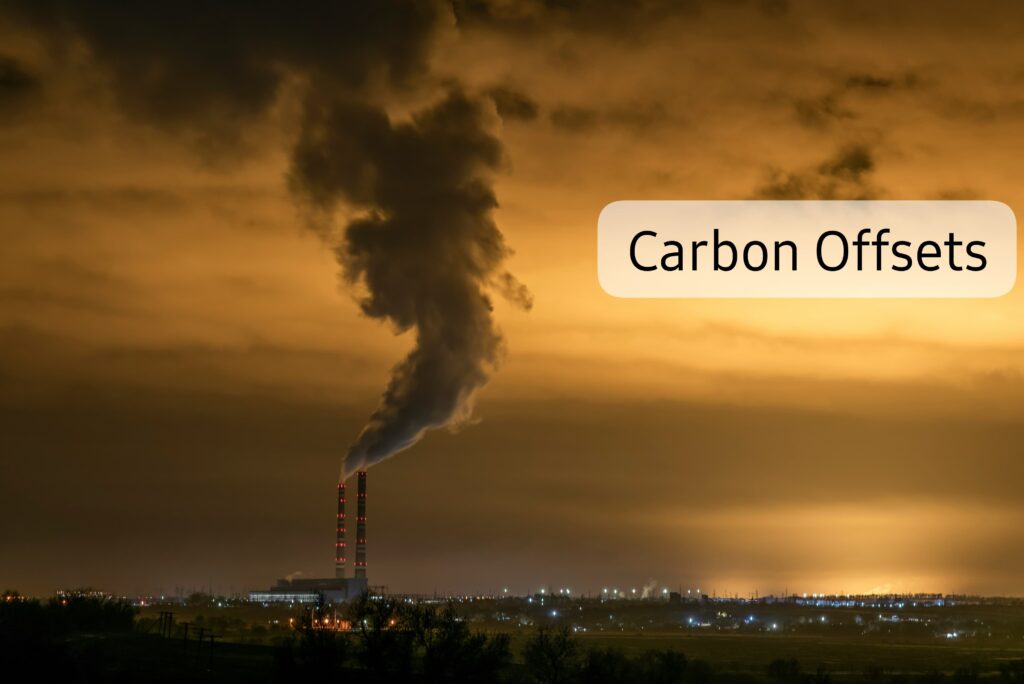5 carbon offsets have become effective instruments for people, companies, and governments looking to lessen their environmental footprint in the continuous effort to combat climate change. By investing in certified climate initiatives that either absorb carbon from the atmosphere or stop future emissions, companies may purchase carbon offsets to accept responsibility for the greenhouse gases (GHGs) they generate. From methane collection and clean cookstove programs to forest protection and renewable energy development, these projects cover a wide spectrum of sustainable endeavors.
However, there are still many misconceptions about 5 carbon offsets despite their rising popularity. A lot of doubters doubt their efficacy, validity, and even moral consequences. These misunderstandings, regrettably, inhibit businesses and consumers from incorporating offsets into their overall climate responsibility plan. This post seeks to clarify the air by addressing and dispelling five of the most popular misconceptions about carbon offsets.
Understanding the facts behind 5 carbon offsets is crucial for distinguishing marketing hype from science-based climate action. Carbon offsets, when utilized correctly—in conjunction with emission reduction objectives and green innovation—become an essential component of any comprehensive environmental strategy. They do not replace direct action, but rather supplement it by addressing pollutants that are currently difficult or impossible to completely eradicate. Whether you’re a tiny business looking to reduce your footprint or a huge corporation striving for net-zero, this guide will help you assess the validity, purpose, and strategic worth of 5 carbon offsets—allowing you to make educated, responsible decisions for a more sustainable future.

Myth 1: Carbon Offsets Are a License to Pollute
One prevalent objection is that carbon offsets allow emitters to continue polluting without making any significant adjustments. While it is true that some companies utilize offsets to avoid decreasing their own emissions, this is not the intended use of offsets. Effective carbon offset programs target direct emission reductions while utilizing offsets to address leftover emissions that are currently unavoidable. The Science Based Targets initiative (SBTi) stresses that enterprises should first reduce emissions inside their operations and value chains before relying on offsets. Offsets should supplement, not replace, direct emission-reduction initiatives.
Myth 2: Carbon Offsets Don’t Actually Reduce Emissions
Skeptics say that carbon offsets do not result in meaningful emissions reductions. While the quality of offset initiatives varies, many are successful when properly conceived and performed. High-quality offset programs go through stringent verification methods to verify that they result in measurable, extra, and permanent emission reductions. Standards such as the Verified Carbon Standard (VCS) and the Gold Standard establish frameworks for evaluating and certifying offset programs. These requirements demand initiatives to demonstrate additionality (emission reductions that would not have happened without the project), permanence, and verifiability.
Myth 3: All Carbon Offset Projects Are the Same
Not all carbon offset initiatives are created equally. They range in type, quality, and impact. Reforestation and renewable energy projects can be as diverse as methane collection and energy efficiency programs. The efficacy of an offset is determined by elements such as project design, execution, monitoring, and verification. When selecting carbon offsets, it is critical to consider the project’s reputation. Look for certificates from credible standards, openness in reporting, and proof of co-benefits such as biodiversity protection or community development.
Myth 4: Carbon Offsets Are Only for Large Corporations
While major firms frequently engage in carbon offsetting, individuals and small enterprises can also take part. Numerous sites provide easily accessible methods for acquiring offsets to reduce personal or business emissions. Individuals, for example, can offset emissions from travel or residential energy consumption, whereas small companies can reduce emissions from operations or supply networks. Carbon offsetting displays a commitment to sustainability and can help a company‘s reputation with environmentally sensitive stakeholders.
Myth 5: Carbon Offsets Are a Permanent Solution
Some people think that by buying carbon offsets, they are permanently released from their environmental obligations. Offsets are not a long-term solution, though. They serve as a stopgap measure for emissions that cannot yet be completely eradicated by direct reductions. Systemic reforms including switching to renewable energy, increasing energy efficiency, and implementing sustainable behaviors should be the main emphasis of long-term climate strategy. A more thorough, all-encompassing strategy should include carbon offsets in order to achieve net-zero emissions.
How to Choose Credible Carbon Offset Programs
To make sure that your investment produces real environmental advantages, you must choose top-notch carbon offset schemes. Here are some important things to think about:
- Certification: Choose projects that have earned certification from reputable organizations such as VCS or Gold Standard.
- Transparency: Verify that the initiative offers precise details about its objectives, methods, and effect analyses.
- Additionality: Be sure that the project reduces emissions in ways that would not have been possible without the offset financing.
- Permanence: Evaluate the steps taken by the project to keep the reductions in emissions from going back.
- Co-benefits: Seek for initiatives that provide extra environmental or social advantages, including biodiversity preservation or community development.

The Future of Offsetting: Integration with Corporate Climate Strategy
Carbon offsetting is changing from a stand-alone practice to an integrated part of business climate initiatives as the need to address climate change becomes more pressing. Businesses are increasingly implementing science-based goals and coordinating their offsetting activities with more general sustainability objectives.
- This integration entails: Plans for Comprehensive Emission Reduction: Giving direct emission reductions throughout supply chains and activities top priority.
- Transparent Reporting: In sustainability reports, offsetting efforts and their effects are disclosed.
- Stakeholder Engagement: Working together with stakeholders to make that offset initiatives meet the expectations and requirements of the community.
Businesses may boost credibility, spur innovation, and make a significant contribution to global emission reduction efforts by including carbon offsetting into their overall climate policies.
Case Study: How Shopify Uses 5 Carbon Offsets for Real Impact
A notable example of how companies may use 5 carbon offsets into their sustainability frameworks to produce noticeable environmental effect is Shopify, a worldwide e-commerce platform. Although many businesses make carbon neutrality promises, Shopify goes above and beyond by funding reputable, scientifically supported carbon offset initiatives that support their long-term climate objectives.
In order to combat climate change, Shopify has invested more than $30 million since the establishment of its Sustainability Fund in 2019. This fund encourages creative offset solutions in five main areas: direct air capture, ocean-based carbon removal, soil carbon storage, reforestation, and renewable energy. These five categories are consistent with Shopify’s policy of implementing 5 carbon offsets across several industries, minimizing dependence on a single project type, and guaranteeing a varied approach to emissions control.
Shopify stands out for its dedication to openness. The business provides frequent reports on the amount of carbon that is avoided or eliminated, as well as where its offset money are going. For example, Shopify has supported businesses like Climeworks, a pioneer in direct air capture technology, and CarbonCure, which injects collected CO₂ into concrete to lower emissions during construction.
Shopify guarantees that it not only offsets its operating emissions but also helps to create a future carbon economy by implementing 5 carbon offsets from various environmental solutions. This instance demonstrates that, when used appropriately, carbon offsets are strategic investments in scalable climate solutions that promote tangible change rather than a license to pollute.
Conclusion: Separating Fact from Fiction on 5 Carbon Offsets
Knowing the truth about 5 carbon offsets is becoming more and more important as the need for climate action grows. Although these offsets are not a panacea, they may be a potent component of a larger sustainability plan when utilized carefully. By dispelling the fallacies, such as the notion that carbon offsets don’t lower emissions or that they are a license to pollute, businesses and individuals may better understand carbon offsets. Verified and high-quality offset programs, particularly those that open management and third-party accreditation support, demonstrate quantifiable environmental benefits and go far beyond being a marketing ploy.
In the end, 5 carbon offsets should be viewed as an instrument for growth and responsibility rather than a quick fix. Businesses such as Shopify have shown how integrating various carbon offset solutions may result in innovation and practical effect. Applying a variety of offset methods, whether through forestry, carbon capture, renewable energy, or soil sequestration, guarantees greater resilience and scalability in carbon reduction initiatives. Purchasing certified, diversified 5 carbon offsets is a sensible and moral move for companies looking to become carbon neutral and establish brand confidence. Businesses may make a significant contribution to the global battle against climate change by distinguishing reality from fiction and making well-informed decisions, all while avoiding the pitfalls of greenwashing.








